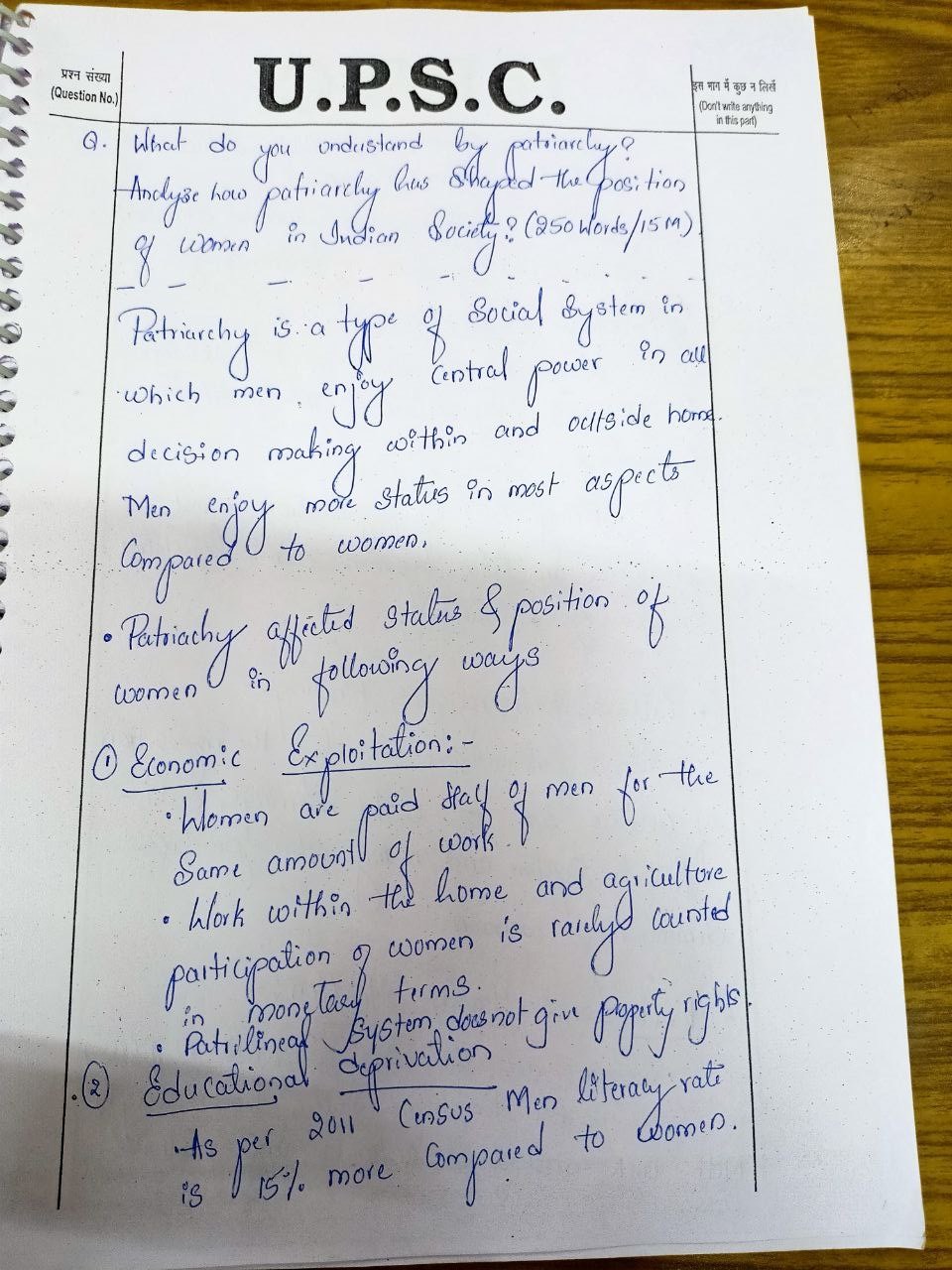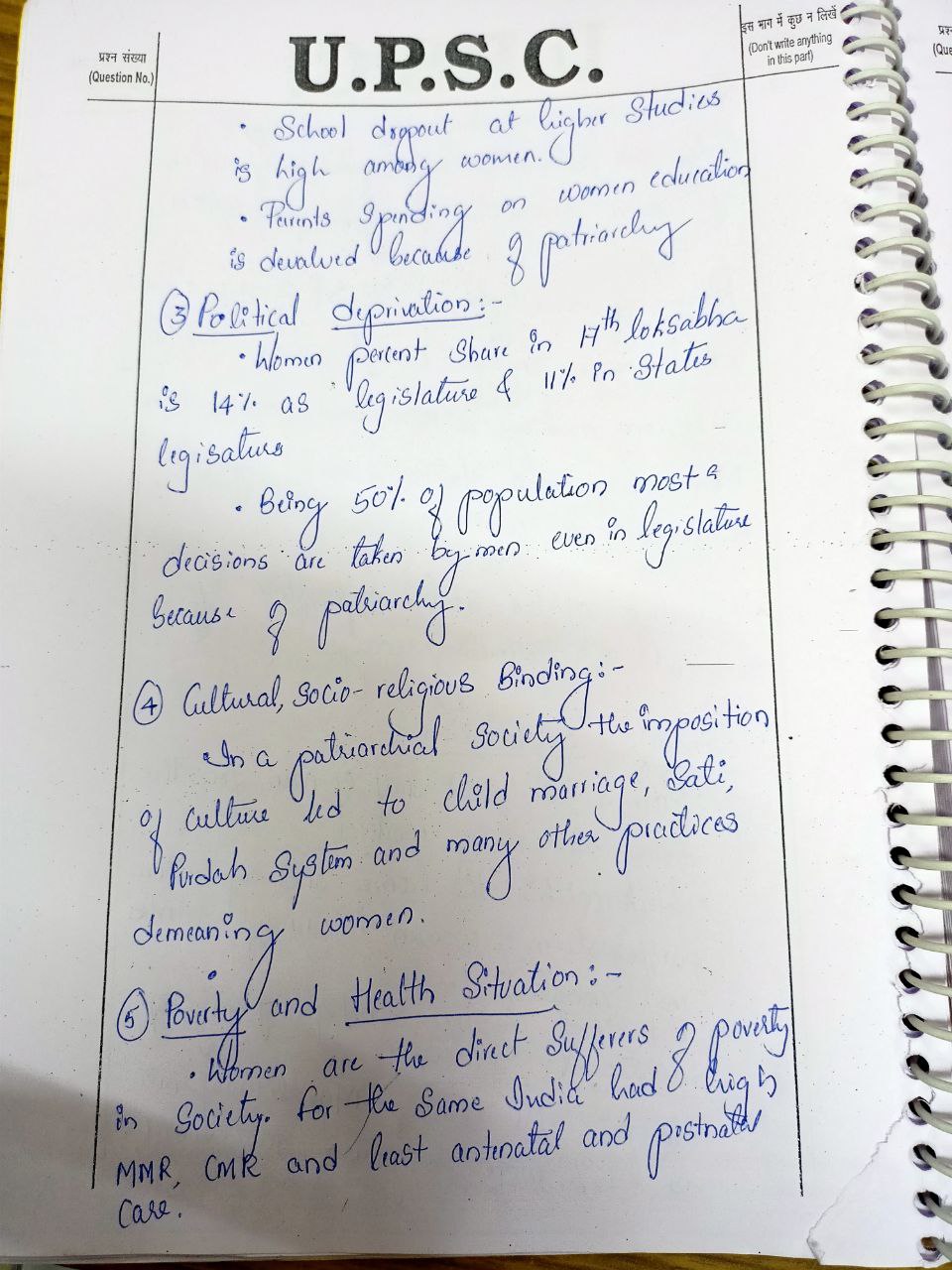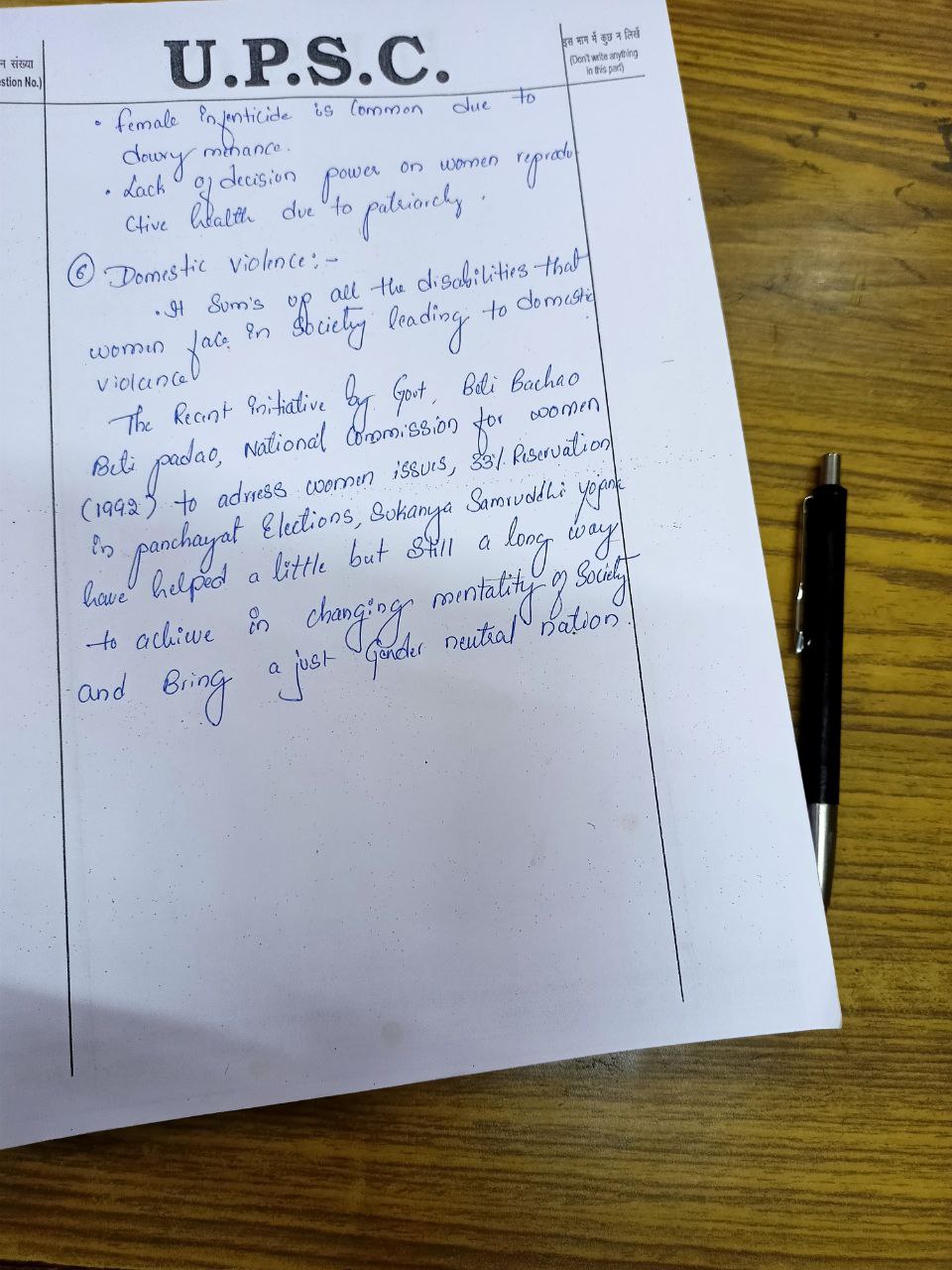Approach:
- Introduction stating patriarchy.
- Mention the narrative surrounding Indian patriarchy.
- Discuss the status of Indian women resulting from patriarchy.
- Conclusion highlighting initiatives taken.
Patriarchy is a social system in which men hold power and predominates in the roles of political leadership, moral authority, and control of means of production. They also tend to dominate in family as the primary decision-takers. In India, patriarchy has manifested itself in social, legal, political and economic organizations.
Patriarchal narrative of Indian society: The Indian debates on socialism & patriarchy are complicated by a significant shift in analysis. Patriarchy came to be discussed in terms of modes of production and reproduction, specific to Indian realities. These are understood regarding family and household; kinship & caste; culture & religion, etc. Arguments have linked the family & economy to demonstrate how economic power of men and their domination of production is crucially linked to, and determined by, the organization of family and household. The household thus emerged as the pillar of both production and patriarchy. Along with household, kin-networks are seen to exercise male power in familial & social contexts as well as on women’s status. The sphere of reproduction is understood in terms of sex-gender system. Reproduction is seen as exploitation of female reproductive capacity. Caste has been central to exploitation with distinctive caste patriarchies existing in India. Debates about capitalism & women subordination often became debates on developments and role of modern states. This has led to theorizing the state as both patriarchal and a potential challenger of patriarchy.
Status of Women in Indian society: UNICEF India’s report on Child Sex Ratio shows that the birth of female children is declining steadily. Since 1991, 80% of all districts had recorded a declining sex-ratio with Punjab being the worst. States like Maharashtra, Gujrat, Himachal Pradesh and Haryana recorded more than 50 points decline in child sex ratio in the same period. Kerala is the only Indian state to favor sex ratio for women. However, in recent times the numbers are showing signs of improvement.
Women form about half the country’s population but their situation remains grim, particularly that of lower socio-economic strata. At the socio-political realm, women suffered denial of freedom in homes, repression and unnatural indoctrination, unequal status in decision-making, and in extreme cases, untouchability marked by rigid caste hierarchies. The religio-cultural practices have worsened women’s woes. Till now, instances are not rare of honor killing by khap panchayats, child marriages, and other social humiliations like rape, dowry, wife beating, etc. – all pointing to the deeply entrenched patriarchal values of Indian society.
The vulnerability of women in rural India is more miserable owing to socio-economic conditions : (a) with high incidence of poverty, women’s exploitation is also high. Better healthcare and educational opportunities seem distant dreams. A girl child is made to suffer the evils in a male-dominated society; (b) due to the cultural ecosystem, gender stereotypes are rigid, causing violence against women which affects the sex-ratio. The main causes of violence are unequal power relations, economic deprivations and no participation in decision-making; (c) women’s works are not valued – severely underpaid for the same work as men does and also does unpaid labor at home; (d) the literacy rate of women is much less than that of men. Educational deprivation is intimately linked to poverty.
Since independence many steps have been taken to improve the lots of women. In this regard, the Beti Bachao, Beti Padhao campaign has been a remarkable initiative in meeting the aspirations of girl child. It has also created much awareness on girl’s education and child marriage. Other schemes like Sukanya Samruddhi yojana, Ladli scheme, several microfinance schemes, etc. are trying to improve the status of Indian women. A National Commission on Women was set up in 1992 to act as a watchdog of women’s issues. However, its success has frequently been questioned. Nevertheless, still there remains many miles to go to reach the goal of gender equality. More than schemes and institutions, we need a behavioral change entrenched in culture to eradicate this menace from the face of India.

 please correct and review. Thank you
please correct and review. Thank you
